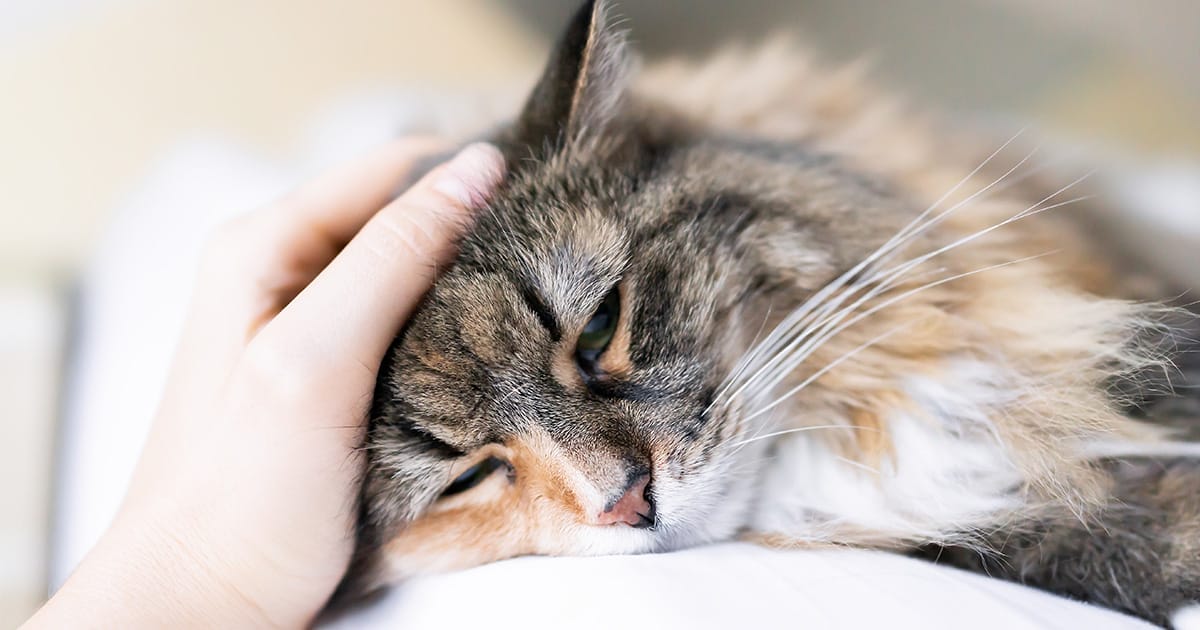
Radioactive Iodine (I-131) Therapy for Feline Hyperthyroidism: A Guide to Pre- and Post-Treatment
One-time radioactive iodine (I-131) treatment for overactive (hyperthyroidism) thyroid in cats. What to expect pre-and post-treatment.
Hyperthyroidism is a common condition in older cats, caused by an overactive thyroid gland. Treatment with radioactive iodine (I-131) has been used effectively in cats since the 1980s. This one-time treatment offers a convenient solution for many cat owners, eliminating the need for ongoing daily treatments at home and potentially improving their cat’s health significantly.
While the term “radioactivity” often implies danger, it’s used in various medical applications, including diagnostics like X-rays and treatments such as radiation therapy for cancer. Radioactive iodine is another medical use of this technology. Iodine is uniquely absorbed by the thyroid gland, as it’s an important component of the thyroid hormones. When administered as a treatment, radioactive iodine (specifically, I-131) selectively targets the thyroid gland. The radioactive decay of I-131 effectively destroys overactive thyroid cells. Fortunately, I-131 has relatively weak radioactivity, and its effects are localized, with the radiation field limited to about two millimeters around the thyroid gland. This makes it an ideal treatment for damaging problematic thyroid cells without posing significant risks to other parts of the body.
Administering radioactive iodine requires strict safety precautions, and facilities offering this treatment must obtain special licenses from federal or state authorities. As a result, this treatment is typically available at specialized veterinary facilities, including select MedVet locations. *

Is Radioactive Iodine Treatment (I-131) Right for My Cat?
Radioactive iodine (I-131) is a viable treatment option for most cats diagnosed with hyperthyroidism. However, certain conditions may make it less suitable for some felines. Cats that might not be ideal candidates include:
- Those in the earliest stages of hyperthyroidism
- Cats suspected of having thyroid cancer rather than benign thyroid issues
- Cats with other underlying medical conditions that could increase the risks associated with I-131 treatment or post-treatment care
Preparing for Your Cat’s Radioactive Iodine (I-131) Treatment Appointment
The preparation process may vary depending on the medical facility your cat is being treated at. Some clinics may require you to work with your family veterinarian to conduct preliminary tests, while others may perform these tests in-house. Common pre-treatment tests include:
- Routine bloodwork (CBC/Chemistry)
- Thyroid level (T4) check
- Urinalysis
- Chest X-rays
Some clinics may also suggest:
- Blood pressure monitoring
- Abdominal ultrasound
- Echocardiogram (heart ultrasound)
- A trial treatment with methimazole (an oral hyperthyroidism medication) to assess your cat’s kidney function when their T4 levels are normal
By understanding these requirements, you can better prepare for your cat’s I-131 treatment and ensure the best possible outcome.

The Radioactive Iodine (I-131) Treatment Process for Your Cat
Radioactive iodine (I-131) treatment is a precise and effective way to address hyperthyroidism in cats. The I-131 is sourced from specialized vendors licensed to handle radioactive materials. Each cat receives a custom-ordered dose, delivered on the exact date and approximate time of administration, to ensure the correct dosage. The treatment involves a simple injection, typically under the skin, which is a quick and easy procedure. To minimize risks, sedation is often used, and a small area of fur may be shaved to mark the injection site clearly.
"Radioactive iodine (I-131) treatment is a precise and effective way to address hyperthyroidism in cats, with 90-95% of cats responding positively."
– Emily Klosterman, DVM, DACVIM (SAIM)
The treatment consists of just one injection. However, your cat will need to remain hospitalized for a quarantine period to allow the radioactivity to dissipate. The duration of this quarantine is regulated by government guidelines and typically lasts around four days. During this time, your cat will be cared for in a specialized ward with limited staff interaction to maintain safety.

Aftercare: What to Expect Following Radioactive Iodine (I-131) Treatment
Once the radioactivity level has dropped to approved levels, your cat will be discharged for continued care at home. To ensure your family’s safety and the general public’s, some precautions are necessary:
- Keep your cat indoors and confined to your home for three weeks, ideally in a separate room like a guest room. This is particularly important if you have young children or pregnant women in the household.
- Avoid letting your cat sleep beside or sit close to people for three weeks.
- Wash your hands thoroughly after touching your cat or wear disposable gloves for three weeks.
- Prevent your cat from walking on food preparation or eating surfaces.
Special Litter Box Handling
When caring for your cat at home, you’ll need to follow special litter box handling procedures:
- Store soiled cat litter in a plastic bag for six weeks before disposing of it. Keep the stored litter outside your home in an enclosed area, such as a garage or an extra trash can.
- Avoid touching the litter; use rubber gloves when handling the litter box.
- Wear rubber gloves when cleaning up any vomit or soiling outside the litter box and wash your hands thoroughly afterward.

Follow-Up Care for Your Cat After Radioactive Iodine (I-131) Treatment
Most cats show improved thyroid levels and symptoms shortly after treatment. Bloodwork assessment typically begins about one-month post-treatment. The I-131 treatment is highly successful, with 90-95% of cats responding positively. In rare cases, cats may develop hypothyroidism (low thyroid levels) after treatment, but this can be easily managed with oral supplements to restore normal thyroid levels.
*Currently, MedVet Cincinnati, MedVet Columbus, MedVet Indianapolis, and MedVet Mandeville offer radioactive iodine (I-131) treatment.
Visit our Pet Care Resources library for more pet health and safety information.
FAQs
What is feline hyperthyroidism?
What is radioactive iodine (I-131) treatment for cats?
What should I expect after my cat receives radioactive iodine (I-131) treatment?
What do I need to do at home for my cat after radioactive iodine (I-131) treatment?
Learn More
For ways to ensure your pet lives a happier, healthier life, visit our Pet Care Resources library.
Pet Care ResourcesContents
Learn More
For ways to ensure your pet lives a happier, healthier life, visit our Pet Care Resources library.
Pet Care Resources


